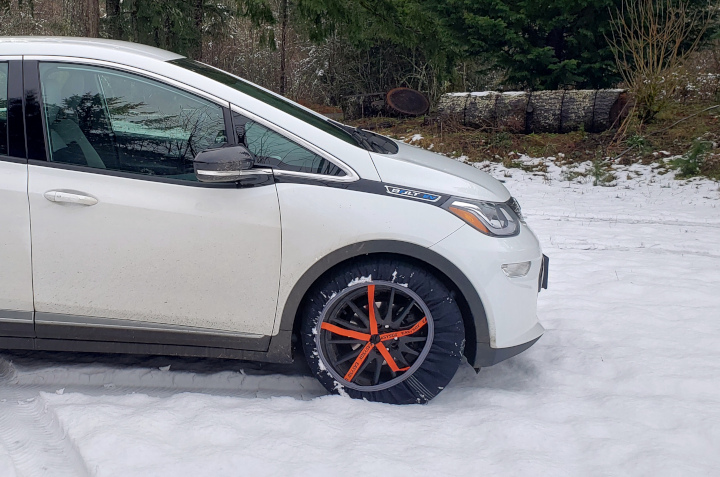I recently bought EasySox brand snow socks for my 2020 Chevrolet Bolt EV, because the car has no clearance for chains. This post walks you through what I did to put the socks on my Bolt – it was about as difficult as putting chains on.
A Little Background
I live in the foothills west of Portland, Oregon. We usually get a few inches of snow a few days each winter. Unlike midwest snow, our snow is slick and wet.
The first winter, I tried driving in snow on the Bolt’s factory (summer) tires, and found I slid a lot. So I put on a set of Michelin CrossClimate2 all-weather tires.
In the winter of 2021-2022 I tried out the new tires on a few inches of snow – they behaved well, but not well enough for me to feel safe in the kind of wet snow we get. So I naively bought a set of cable chains and thought nothing more about it.
This winter (2023-2024) when snow threatened, I tried to put the chains on, and found they nearly stuck inside the wheelwell. So I went to the Chevrolet dealer and asked about chains for the Bolt. Their answer: the Bolt has no clearance for chains; chains will damage your Bolt; try snow socks. I read the Chevy Bolt forums and found the same information. The Bolt driver’s manual repeats the information: the front wheels don’t have clearance for chains; even cable chains.
Snow socks are fabric tubes that fit over your tires. They’re designed for low-profile / low-clearance cars like the Bolt. So I bought a set of EasySox snow socks and waited for snow. Recently I got my chance: 2 inches of snow, followed by 4 more inches of snow.
Putting the EasySox On the Bolt
The videos I’d seen led me to believe putting the snow socks on would be a breeze. Instead I found they took about as much work as cable chains, because the Bolt doesn’t have enough clearance for me to get my hands to the back of the top of the tire.
Tip: turn the wheels to put the snow socks on.
I turned the wheels to the right, to give me space to put the snow sock on that part of the right tire.

I then pulled the sock over the front of the tire, and slipped my hands between the sock and the tire, to pull the inward elastic over the inside of the tire.
I was able to get the sock on about 1/4 of the tire, which is all I needed to proceed.
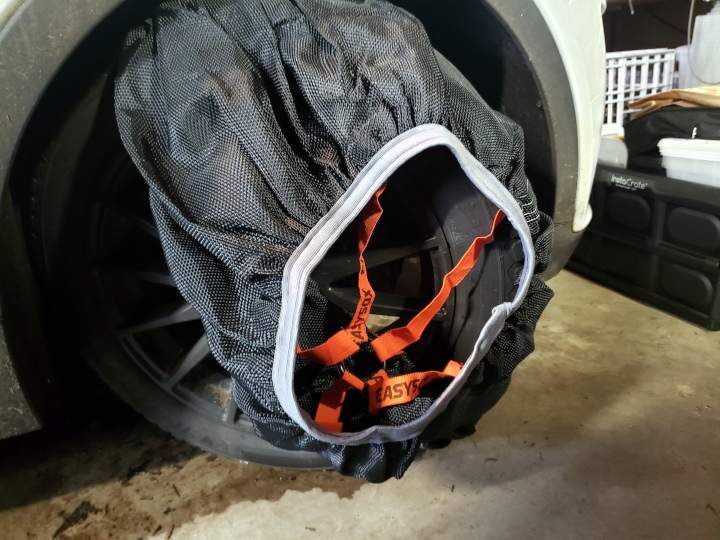
I then turned the wheels to the left – not all the way, because doing that would eliminate some clearance I needed.
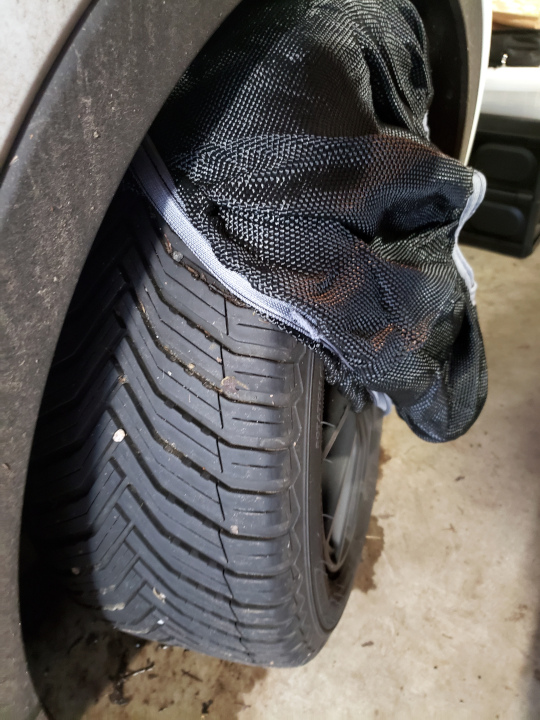
After a bit more tugging at the sock and slipping my hands between the tire and the sock, I had about 2/3 of the tire covered.

Then I drove the car backward about 1/2 turn of the tire, to give me a chance to pull on the rest of the sock.

After a little more tugging, the one sock was on, though unevenly. The instructions say that the socks will even themselves out as you drive.
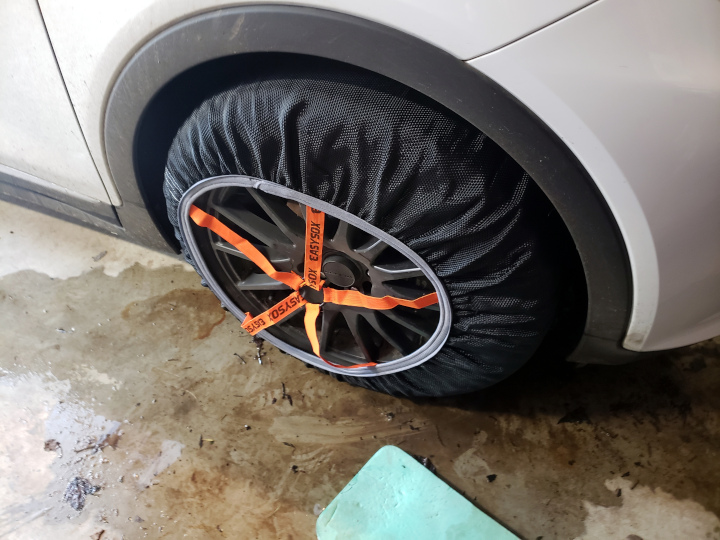
I repeated the process for the left-front tire. The whole process took about 15 minutes; I imagine I’ll be quicker with practice.
Removing the Snow Socks
Taking the snow socks off was a lot easier than putting them on: I sharply tugged the sock from the outside-top until some of the wheel was exposed, then backed the car up until that exposed part was on the ground, and tugged the rest of the sock off.
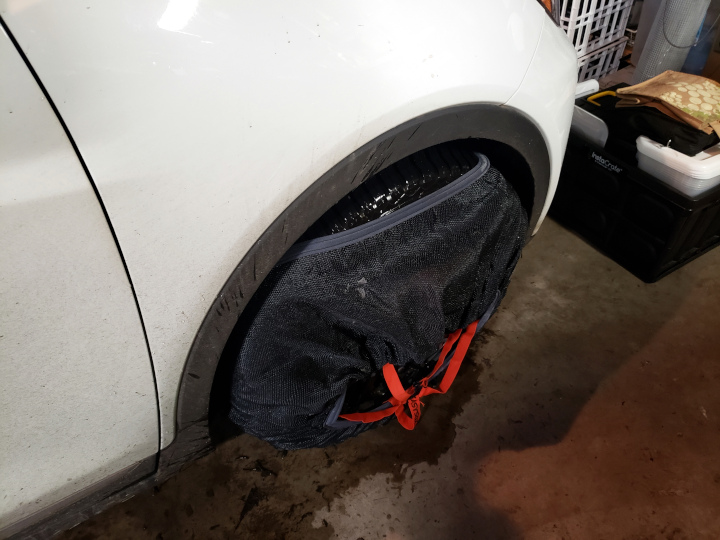
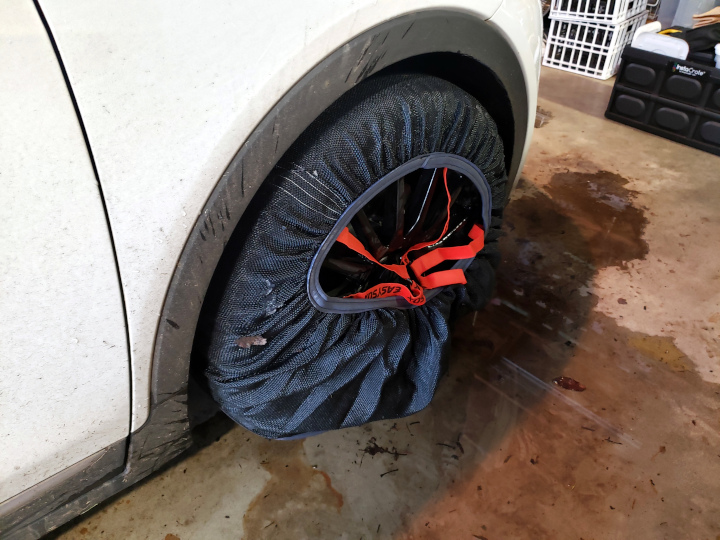
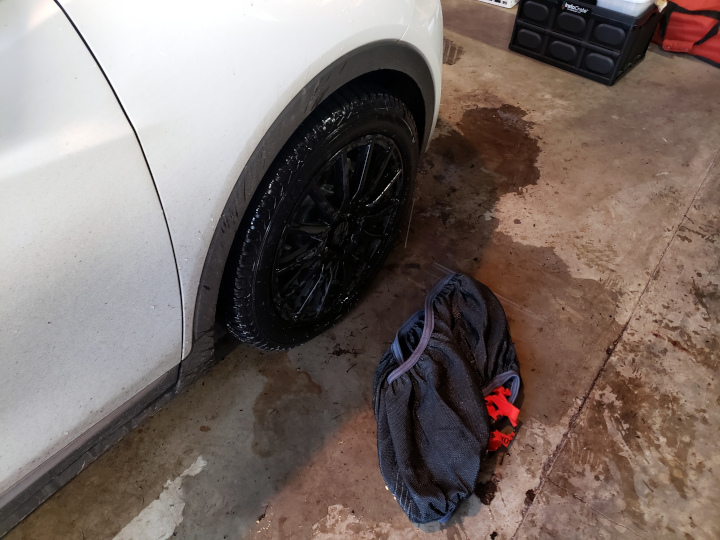
Driving on Snow Socks
The manufacturer says snow socks are designed for emergency use, perfect for my getting home in a surprise snowstorm. They won’t hold up to, say, driving up Oregon’s Mount Hood every weekend to ski – for that I’d need snow tires.
The socks also can’t be driven on bare pavement. You need to remove them once the road is clear. Thankfully, it’s very easy to remove them.
The manufacturer also says to remove the socks once you’ve finished your trip, to keep the socks from freezing to the packed snow.
I found that in 2 inches (about 5 cm) of snow, the socks performed well, and much better than my all-season tires without snow socks. In 5 inches (about 13 cm) of snow, they still worked reasonably well, slipping here and there, but performed nowhere near as well as chains could do (if chains could be put on a Bolt EV).
For example, in 5 inches of snow on level ground the car did slip just a touch once or twice. We have a loop driveway, with one entrance that has an easy slope and another that is very steep. The snow socks got the car up and down the less-steep slope easily, but didn’t provide enough traction to get me up the steep drive.
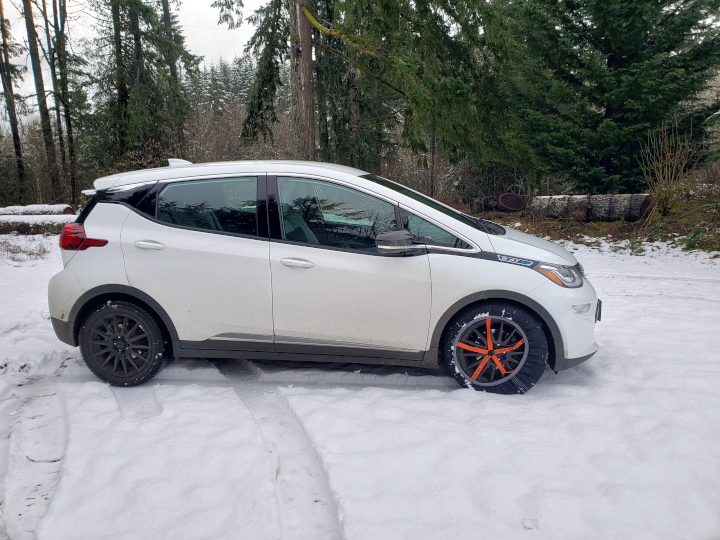
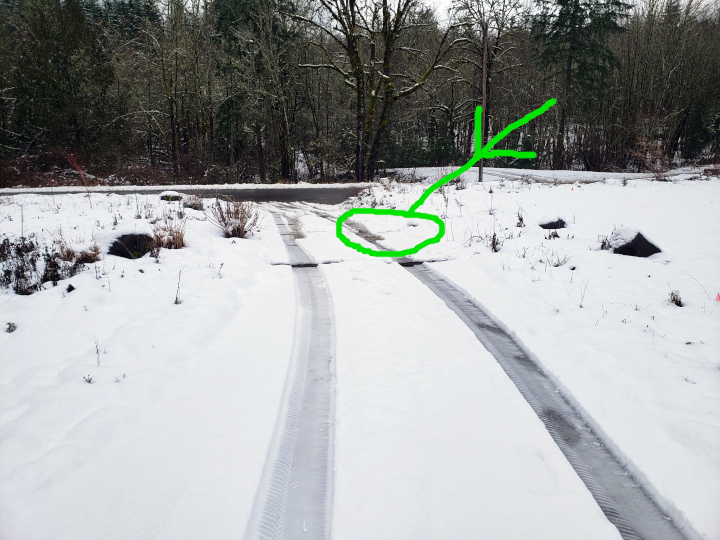
Conclusion
Snow socks will likely work perfectly for me, to get me home when I’m caught in an unexpected snow, or to get me out of the house when a few inches of snow has fallen. They don’t perform as well as chains, but they do perform well, and seem to be the only alternative (short of snow tires) for better traction with my 2020 Bolt EV.

